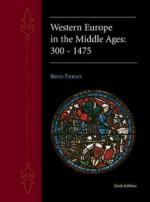|
This section contains 904 words (approx. 4 pages at 300 words per page) |

|
The Poor. Medieval cities were home to a large underclass, and it has been estimated that in some latemedieval cities up to 40 percent of the population was too poor to pay taxes. Like cottagers and laborers in the countryside, such people lived a hand-to-mouth existence. If one of these people had shelter, it might be a rented, unheated room in a building where several families were housed. Such residences might be furnished with a cookpot, a thin mattress, a table, and a bench. Their clothes were threadbare wool or linen, and their shoes—when they had them—were patched. Without any savings or resources to sell, the poor were the first to suffer in famine, drought, or plague. Hungry people and beggars were common sights on medieval streets.
Welfare. Medieval people were not insensitive to...
|
This section contains 904 words (approx. 4 pages at 300 words per page) |

|




